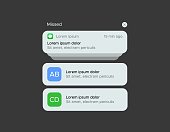Sharing the Folders

본문
Why Create Shared Folders for Groups?
-------------------------------------

Shared folders are an excellent way to collaborate with team members, collaborate on projects, and enhance communication among team members. They are especially useful when working with large teams or multiple departments within an organization. Shared folders ensure that everyone has access to the necessary files and information to complete their tasks.
Setting Up a Shared Folder
-------------------------
Setting up a shared folder for a group is relatively straightforward and is usually done within seconds. The steps to follow may vary depending on the operating system you are using. Here is a general guide:
- Create a folder on your computer or server drive. This folder will serve as the shared location for your team.
- If you are using a cloud storage service such as Google Drive or Dropbox, create a shared folder within the cloud storage service. These services often provide features such as automatic sharing and permissions.
- Once you have set up the shared folder, add the group email address or individual email addresses of team members to the folder's permissions.
- Decide what level of access each user will have to the shared folder. Options may include read-only access, write access, or administrator-level access.
--------------------------------------
When setting up permissions for a shared folder, it's essential to consider the level of access each team member will need. Here are some common types of permissions:
- Read-only access: Team members can view files in the shared folder but cannot make changes or add new files.
- Write access: Team members can view files and make changes to the shared folder.
- Administrator-level access: Team members have full control over the shared folder, including deleting files, assigning permissions, and more.
--------------------------------
Managing a shared folder can be a challenge, but with a few tips and tricks, you can streamline the process:
- Clearly communicate the purpose of the shared folder and expectations for use.
- Set clear permissions and access levels for each user.
- Establish a regular routine for updating and maintaining the shared folder.
- Provide training on how to use the shared folder and collaborate with team members.
-------------------------
Shared folders for groups offer numerous benefits, including:
- Enhanced communication and cooperation among team members.
- Reduced mistakes and misunderstandings due to reduced confusion and access to accurate information.
- Simplified file sharing and distribution of data.
- Increased productivity and efficiency due to streamlined collaboration processes.
----------
Creating shared folders for groups is a straightforward process that offers numerous benefits for cooperation and teamwork. With the right permissions, setup, and management, shared folders can become an essential tool for driving success in both personal and professional settings. Whether using cloud storage services or local computer networks, 电报官网 the process of creating shared folders is relatively simple.

댓글목록0
댓글 포인트 안내